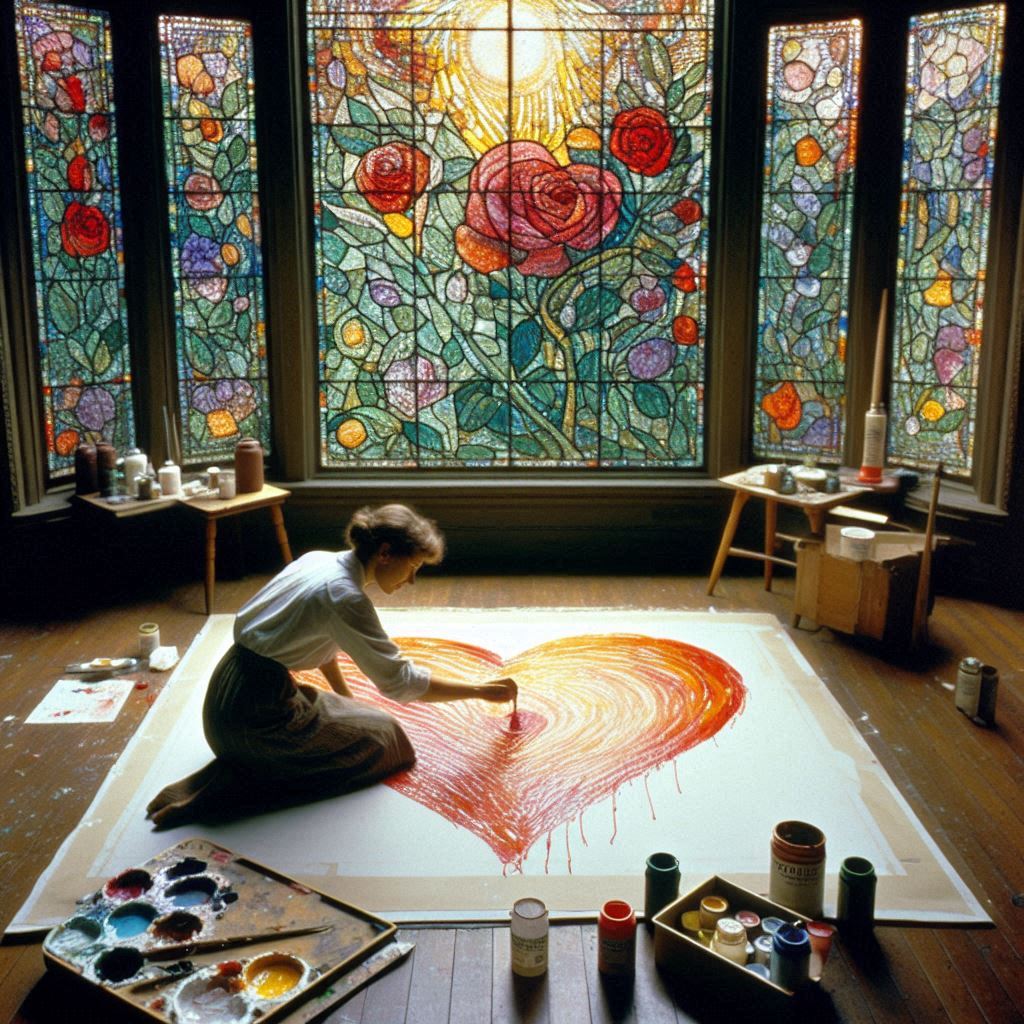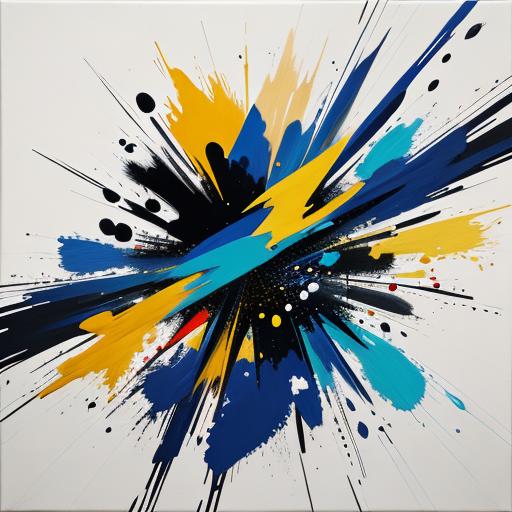Throughout art history, female abstract artists have transformed the landscape of modern art, often working against tremendous barriers to recognition and success. These pioneering women developed revolutionary techniques, explored bold concepts, and created works that challenged conventional artistic boundaries—yet many received far less recognition than their male counterparts. Despite facing gender discrimination in galleries, museums, and art criticism, these visionary women persisted in pushing abstract art forward, creating a legacy that continues to inspire artists today.
Key Points:
- Female abstract artists made revolutionary contributions despite gender barriers
- Many pioneered innovative techniques that influenced entire art movements
- Recognition often came late, with history overlooking their contributions
- Their artistic influence extends into contemporary abstract art today
- These women’s stories represent triumph over systemic discrimination
Early Pioneers Who Changed Abstract Art Forever
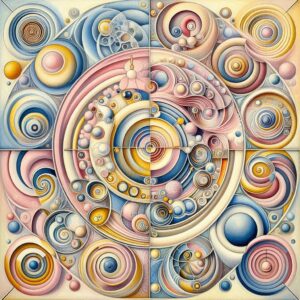
Long before abstract expressionism dominated art scenes, several groundbreaking female artists were already developing non-representational styles that would change art history. Perhaps most remarkable was Hilma af Klint, whose abstract paintings predated those of Kandinsky and Mondrian by several years. Working in Sweden in the early 1900s, af Klint created geometric abstractions filled with symbolic meaning, though at her request, they remained hidden from the public until decades after her death.
Another visionary was Sonia Delaunay, whose “simultaneous contrasts” of color created rhythmic, abstract compositions that bridged painting, textile design, and fashion. Her work with vibrant color relationships helped establish the Orphism movement alongside her husband Robert Delaunay.
Swiss artist Sophie Taeuber-Arp developed a distinctive geometric abstract style that merged fine art with applied arts like textiles and interior design. Her multidisciplinary approach challenged traditional hierarchies in the art world, demonstrating that abstract design principles could transform everyday objects into works of profound artistic significance.
Female Abstract Expressionists Who Revolutionized Art
The abstract expressionist movement of the 1940s-1960s is often portrayed through its male stars, but women played crucial roles in its development, bringing unique perspectives and techniques.
Lee Krasner developed a dynamic abstract style characterized by rhythmic, gestural brushwork and sophisticated color harmonies. Despite being married to Jackson Pollock, she maintained her artistic independence, continuously reinventing her approach throughout her long career. While Pollock became famous for his drip painting technique, Krasner’s technical mastery and compositional intelligence are now recognized as equally groundbreaking.
Helen Frankenthaler developed the revolutionary “soak-stain” technique, where she poured thinned paint directly onto unprimed canvas, allowing it to soak in and create luminous fields of color. This innovation influenced an entire generation of Color Field painters and transformed approaches to abstract painting.
“Instead of working with the paint on top of the canvas, I work with the canvas, letting the paint soak in.”
Helen Frankenthaler

Joan Mitchell created explosively energetic compositions with vibrant color and powerful brushwork. Her large-scale canvases convey intense emotional states while maintaining extraordinary compositional balance. Mitchell’s work stands as some of the most accomplished abstract expressionist painting by any artist, regardless of gender.
Alma Thomas, who began her painting career in her 60s after retiring from teaching, developed a unique style featuring mosaic-like patterns of vibrant color. As the first African American woman to have a solo exhibition at the Whitney Museum of American Art, her late-blooming career represents a triumph over both gender and racial barriers.
Mid-Century Innovators Who Redefined Abstraction
As abstract expressionism evolved, women artists continued pushing boundaries and developing distinctive approaches to abstraction.
Agnes Martin created minimalist works featuring subtle grids and delicate lines that evoke meditative states. Her deceptively simple compositions reveal incredible sensitivity to proportion, line, and the most delicate color variations. Martin’s rejection of emotional expressionism in favor of spiritual transcendence opened new possibilities for abstract painting.
British artist Bridget Riley became a leading figure in Op Art with her precisely composed abstract paintings that create mesmerizing visual effects. Her black-and-white geometric patterns from the 1960s create the illusion of movement and vibration, demonstrating how abstraction could engage perception directly.
Yayoi Kusama developed her signature “infinity net” paintings and immersive installations featuring repeated dots and patterns. Her work explores psychological themes including obsession and the dissolution of the self. Kusama’s practice spans painting, sculpture, performance, and installation, demonstrating the expandable boundaries of abstract art beyond the canvas.
Contemporary Female Abstract Artists Breaking New Ground
Today’s female abstract artists build upon this rich legacy while exploring new concepts, materials, and contexts.
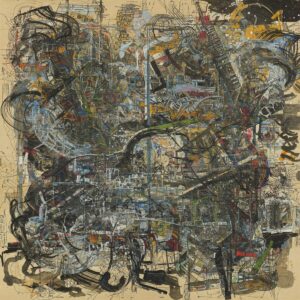
Ethiopian-born Julie Mehretu creates large-scale, multilayered abstract compositions that combine architectural drawing, mapping techniques, and expressive mark-making. Her work addresses globalization, displacement, and social systems through dense visual languages that seem to capture the complexity of modern experience.
German artist Charline von Heyl creates unpredictable abstract paintings that resist easy categorization, mixing references to art history with bold improvisation. Her work demonstrates abstraction’s continued vitality as a space for visual invention.
Amy Sillman combines gestural abstraction with figurative elements, humor, and digital processes, expanding abstract painting’s expressive vocabulary. Her work often negotiates between spontaneity and careful revision, embracing abstraction’s capacity for complexity and contradiction.
British artist Cecily Brown creates energetic, sensual abstractions that hover between figuration and pure form. Her lush brushwork and rich color palettes create dynamic compositions that reference art history while feeling urgently contemporary.
Overcoming Barriers in the Art World
Female abstract artists have faced extraordinary obstacles throughout art history:
- Exclusion from exhibitions and gallery representation
- Diminished critical attention with reviewers often focusing on gender rather than artwork
- Lower market values compared to male counterparts with similar accomplishments
- Being defined primarily as wives, partners or students of famous male artists rather than independent creators
- Limited teaching positions and institutional support
Despite these barriers, these artists persisted, finding creative ways to develop their work and gain recognition. Many formed supportive communities with other women artists, established alternative exhibition spaces, or took teaching positions to sustain their artistic practices.
The struggles of these pioneers highlight how gender bias has shaped art history, with many female abstract artists only receiving proper recognition decades after their most innovative work was created. Museums and scholars are now actively working to correct this historical imbalance through exhibitions that explore different art movements and reevaluate the contributions of previously marginalized artists.
Techniques and Approaches
Female abstract artists have pioneered numerous innovative techniques that expanded abstract art’s possibilities:
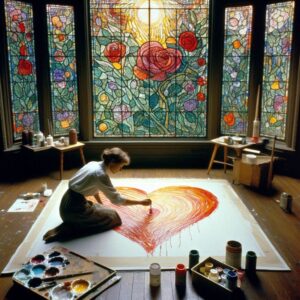
| Artist | Signature Technique | Visual Effect |
|---|---|---|
| Helen Frankenthaler | Soak-stain method | Luminous color fields |
| Alma Thomas | Mosaic patterns | Vibrant color units |
| Agnes Martin | Delicate grids | Meditative precision |
| Yayoi Kusama | Infinity nets/dots | Immersive repetition |
| Julie Mehretu | Multilayered mapping | Complex spatial dynamics |
Many developed these approaches out of necessity, working in smaller studios or adapting to limited resources. The resulting innovations often brought fresh perspectives to abstract painting, creating opportunities for expression that moved beyond established conventions.
Legacy and Continuing Influence
The impact of female abstract artists extends far beyond their individual achievements. Their work has:
- Expanded the visual language of abstraction
- Challenged limited definitions of what abstract art could express
- Demonstrated alternative approaches to materials and processes
- Connected abstract painting to broader cultural and social concerns
- Created pathways for future generations of artists regardless of gender
Today, many contemporary artists cite these pioneering women as crucial influences on their own work. Museums and galleries increasingly feature exhibitions focused on abstract art that highlight these previously overlooked contributions, while art historians continue discovering and documenting the full extent of women’s participation in abstract art movements.
Educational resources like the National Museum of Women in the Arts provide crucial information about female abstract artists, helping ensure their innovations are properly understood within art’s broader history.
Black Female Abstract Artists Who Changed History
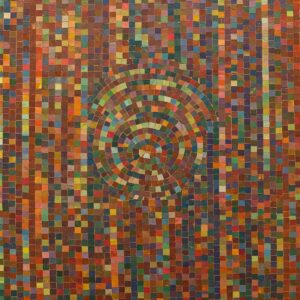
Among the most groundbreaking yet overlooked abstract artists are Black women who faced both racial and gender discrimination. Alma Thomas developed her distinctive mosaic-like abstraction style after retiring from teaching in Washington D.C.’s public schools. Her vibrant color compositions often referenced natural patterns while creating purely abstract visual experiences.
Contemporary artists like Mary Lovelace O’Neal explored abstract expressionism through large-scale canvases featuring bold gestural marks and intense color. Her “Whales Fucking” series from the 1970s demonstrates how abstraction could carry political and personal content while maintaining formal power.
Howardena Pindell developed complex abstract works using unconventional materials and processes, including paper punches, sequins, and powder. Her textured surfaces and nuanced compositions challenge assumptions about abstract painting’s possibilities while addressing issues of identity and memory.
Understanding and Appreciating Female Abstract Artists
For those new to abstract art, these approaches may help appreciate these artists’ contributions:
- Look closely at technique – notice brushwork, color relationships, and compositional decisions
- Consider historical context – understand what made their approaches revolutionary
- Explore each artist’s development – see how their style evolved over time
- Compare with male contemporaries – recognize what made their viewpoints unique
- Consider the personal elements – abstract art often expresses emotional or philosophical positions
The women who pioneered abstract art weren’t simply following trends—they were actively inventing new visual languages and challenging artistic conventions. Their works reward patient viewing and thoughtful consideration.
For those interested in learning more about color theory and techniques used by these artists, resources like Color Theory Basics can provide helpful background knowledge.
Female Abstract Artists’ Enduring Impact
Today, female abstract artists continue to expand upon the foundation laid by these pioneers, working across diverse media including digital platforms. The possibilities for abstract expression continue growing as artists bring new cultural perspectives, technological approaches, and conceptual frameworks to their work.
What these remarkable women artists share is their commitment to artistic innovation despite significant obstacles. Their stories remind us that art history isn’t simply a progression of styles but also reflects social structures that determine whose work gets seen, collected, and remembered. By recognizing these female abstract artists’ contributions, we gain a fuller understanding of abstract art’s rich history and continuing relevance in contemporary visual culture.
FAQ About Female Abstract Artists
Who was the first female abstract artist?
While debate continues about who deserves this title, Hilma af Klint created fully abstract paintings as early as 1906, predating Kandinsky’s first abstract works. However, since her work remained hidden during her lifetime, Swedish artist Hilma af Klint wasn’t recognized as a pioneering abstractionist until decades after her death.
Who is the most famous female abstract expressionist?
Helen Frankenthaler is widely considered the most renowned female abstract expressionist. Her “soak-stain” technique revolutionized painting approaches and influenced the Color Field movement. Other significant figures include Lee Krasner, Joan Mitchell, and Elaine de Kooning.
Why were female abstract artists overlooked historically?
Women abstract artists were marginalized due to systemic sexism in galleries, museums, criticism, and education. Many had limited exhibition opportunities, received less critical attention, and were often defined primarily through their relationships with male artists rather than their own work.
Which female abstract artists are most valuable in today’s market?
Works by Joan Mitchell, Agnes Martin, and Helen Frankenthaler now command millions at auction, though still typically less than male counterparts of similar stature. Contemporary artists like Julie Mehretu have also achieved significant market recognition.
How did female abstract artists influence modern art techniques?
Female abstract artists pioneered numerous influential techniques, including Frankenthaler’s soak-stain method, Agnes Martin’s precise grid compositions, and Yayoi Kusama’s infinity patterns. These innovations expanded the possibilities for abstract expression and influenced subsequent generations of artists regardless of gender.

